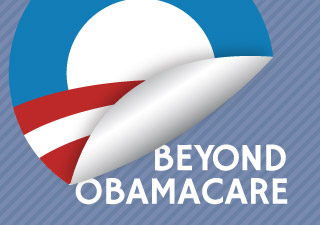Fact Sheet

Affordable Care Act: Costs to Pennsylvanians
The Patient Protection and Affordable Care Act—often dubbed “Obamacare”—will cost Americans $1.2 trillion from 2012 to 2022 according to the Congressional Budget Office. These projections do not account for the additional costs to state governments or the higher costs for private health insurance.
Higher Costs for Pennsylvania Taxpayers
- The Affordable Care Act (ACA) requires states to expand eligibility for Medicaid (government health insurance for the poor and disabled) up to 138% of the federal poverty line.
- The U.S. Supreme Court ruled the federal government cannot force states to increase Medicaid eligibility, making the expansion optional.
- The expansion would extend Medicaid eligibility to an additional 800,000 Pennsylvanians, placing a quarter of state residents on government insurance (40% including Medicare enrollees). Most of the newly eligible would be non-disabled adults.
- Newly eligible Pennsylvania Medicaid recipients would cost taxpayers more than $21 billion from 2014 to 2022 according to the Heritage Foundation. While federal tax dollars would cover the majority of this cost, state taxpayers’ costs would range from $1.3 to $5.5 billion.
- The Obama administration recently proposed reducing the federal share to address budget deficits.
- Even without the expansion, Medicaid costs are unsustainable.
- Medicaid currently consumes about 30% of Pennsylvania’s total state operating budget.
- Over the past decade, Pennsylvania Medicaid spending increased 83%, nearly twice as much as personal income (45% over the last 10 years).
- The Government Accountability Office projects Medicaid expenditures will continue to grow faster than the economy even without the ACA expansion.
- Pennsylvania taxpayers will pay $1.2 billion more for Medicaid from 2014 to 2019 for the “woodwork effect”—individuals who are currently eligible and enrolling to avoid the ACA’s individual mandate tax.
- The ACA creates additional state administrative costs to comply with regulations—an estimated $134 million in fiscal year 2013-14 and $267 million in fiscal year 2014-15, according to testimony from PA Secretary of Public Welfare Gary Alexander.
Lower Quality Care and Higher Costs
- Government programs provide limited access to care and low-quality coverage.
- Currently, one-third of Medicaid providers will not take new patients, according to a study published in the journal Health Affairs.
- Pennsylvania’s aging population, which depends on Medicare, will experience lower quality care as the ACA cuts Medicare Advantage (Medicare plans provided by private companies) and reduces doctor payments, which are already less than private insurance payments.
- In some cases, Medicaid patients experience worse outcomes than uninsured patients. According to a study in the American Journal of Cardiology, the odds of dying in the hospital following heart surgery are higher for Medicaid patients than those without coverage, and four times the rate of those with private insurance.
- Medicaid recipients have more difficulty accessing specialty care. While 44% of children on Medicaid with juvenile diabetes could not get an appointment with an endocrinologist, only 9% of children on private insurance could not schedule an appointment. Furthermore, the average wait time was 103 days for children on Medicaid compared with 47 days for private insurance, based on a 2011 New England Journal of Medicine study.
- Despite promises from President Obama that insurance costs would decline, premiums throughout Pennsylvania are increasing.
- Highmark raised rates for small businesses by more than 50% in July 2010 and requested another 10% base rate hike for 2013.
- Blue Cross of Northeastern Pennsylvania was approved for rate increases from 9% to 15%.
- Aetna increased Individual Advantage Plan rates by 10%, citing the ACA.
- Capital Blue Cross raised individual plan rates by an average of 10% for 2013.
- Coventry Health raised small group plans by 11.9% for 2013.
- Everence Insurance raised rates for individual Vantage plans by 11% for 2013.
- Medicaid and Medicare underpayments cause higher premiums as costs are shifted to commercial payers. Underpayments add about 10.6% to the average family of four’s premium.
- Expanding Medicaid encourages lower income workers to drop private insurance in favor of low quality, taxpayer-funded care, passing more costs to taxpayers without reducing the number of uninsured.
- Nationally, total government and private health care spending is projected to grow by 7.4% in 2014 (when many of the ACA provisions go into effect), and then continue to increase by 6.2% annually through 2021, according to the Centers for Medicare and Medicaid Services.
New Taxes
- The ACA includes 20 new taxeson providers, consumers, non-consumers and the health care industry.
- Overall, the ACA taxes will take more than $500 billion from American taxpayers between 2012 and 2022. The cost of these taxes comes to $1,591 per person through 2022, or $6,363 per family of four.
Patient-Centered Alternatives
- Policymakers can lower the cost of health care and give patients more control by implementing the following reforms:
- Congress should give states flexibility to manage Medicaid through block grants or waivers, which would reduce mandates tied to federal funds and allow state lawmakers to customize Medicaid to meet the unique needs of Pennsylvanians.
- Congress must even the playing field by allowing individuals to receive the same tax benefits for purchasing insurance as businesses receive.
- By returning health care policy to the states, state lawmakers can adopt cost-saving reforms that:
- Allow individuals and small businesses to buy insurance across state lines.
- Allow individuals to opt out of certain mandates or buy “mandate-lite” insurance.
- Repeal state laws which drive up the cost of prescription drugs, requiring higher prices than places like Wal-Mart would otherwise charge.
- Adopt lawsuit abuse reform, eliminating frivolous suits, jackpot jury awards, and defensive medicine that drive up the cost of health care.
# # #
For more on Health Care Policy, visit www.CommonwealthFoundation.org